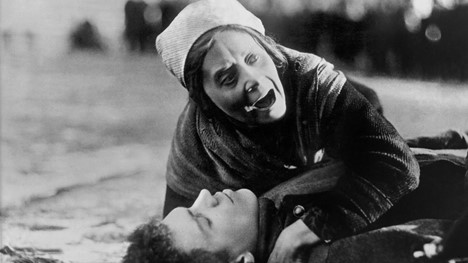Mother (1926)
Vsevolod Pudovkin's "Mother"
After the Soviet Montage movement exploded into the world's consciousness with films like "Strike" and "Battleship Potemkin," other Soviet filmmakers continued in its practice. One such filmmaker, Vsevolod Pudovkin, created one of the most incredible pieces of Soviet filmmaking in 1926 with "Mother." Based on the 1906 novel "The Mother," by Maxim Gorky, the film depicts the radicalization of a mother during the Russian Revolution of 1905.
In the film, a mother's son is imprisoned after it is discovered that he leads a worker's union strike. The mother joins up with the revolutionaries to free her son from prison. The revolutionaries infiltrate the prison and free the son. While embracing his mother, the son is shot dead by the Tsarist troops. The mother, now radicalized, marches toward the troops holding a Socialist flag. After meeting her death, the film ends with a montage of fortresses, churches, factories, and towers of the Kremlin with that flag waving on top of each.
The film is not only another exercise in montage theory but also revisions circumstances surrounding the Russian uprising twenty years prior. This was also done in "Strike" and "Battleship Potemkin" a year prior and would be done again a year later with "Oktober (Ten Days That Shook the World)" and "The End of St. Petersburg." In taking recent Russian history and glorifying the sacrifices made by the Russian socialists, these Soviet propaganda films set to reaffirm a shared collectivist ideology. This only reaffirms those that are in power in Russia at the time.
Pudovkin continues with Eisenstein's montage effects in "Mother." In taking a group of images and arranging them not as sequential cause and effects, but as abstract storytelling, Pudovkin builds an emotional and intuitive theme in the mind of the viewer. As Pudovkin puts it, "the film is not shot, but built, built up from the separate strips of celluloid that are its raw material." Pudovkin also uses some of the same montage effects that can be found in Eisenstein's Odessa Steps sequence. For the prison break sequence, Pudovkin makes quick edits that jump around in space. In doing so, he doesn't allow the viewer's visual perception to settle on any one thing. With the frantic hopping around from one visual image to another, the viewer feels a sense of anxiety and chaos. This allows Pudovkin to designate a single cause of that fear and anxiety through the Tsarist troops. With the Soviet montage effect, the viewer feels swept up in the violence, full of fear, and certain of who is causing that fear. With this, propaganda films continue to be a powerful mechanism for conditioning their viewers.




Comments
Post a Comment